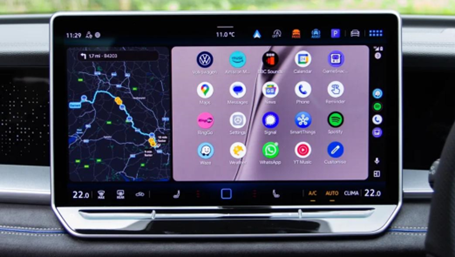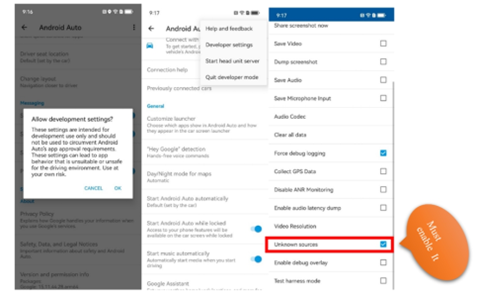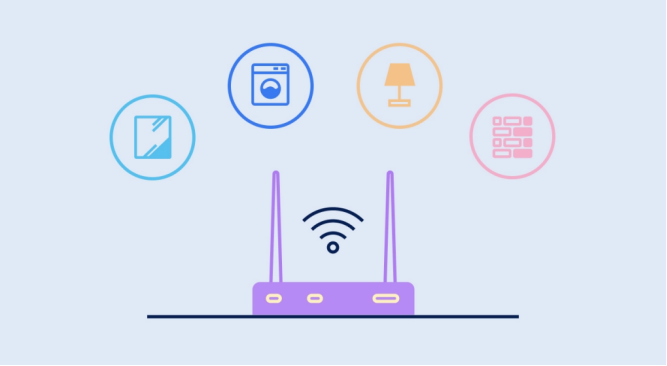AI-Powered Interface: Android Auto UI Trends
Android Auto’s mobile experience is transforming with AI-driven innovations. Users can now enjoy smarter, safer, and more responsive interfaces tailored to their driving routines. These changes are not limited to head units—Android Auto apps on phones also benefit from intelligent features. From adaptive layouts to dynamic shortcuts, AI is powering a seamless journey. This article explores how AI improves interaction, boosts accessibility, and lays the foundation for a future-ready driving assistant through your Android device.

How AI Shapes the Mobile Android Auto App
Smart Launch Recommendations Based on Driving Routines
AI uses past behavior and time-based patterns to predict which apps drivers will likely need. If you often start a playlist during your commute, Android Auto may suggest it as you launch the app. Frequent routes, common contacts, and preferred navigation tools surface automatically. This reduces driver distraction and allows quicker access to relevant tools. By streamlining app launches through learned behavior, Android Auto provides a more responsive and intuitive driving companion on smartphones.
Adaptive Interface Layout on Different Screen Sizes
AI evaluates screen size, resolution, and orientation to adjust layout elements in real-time. Whether you’re using a compact phone or a large-screen device, button sizes, text visibility, and touch targets adapt for readability and safety. Navigation cards shift placement for optimal use, ensuring no manual tweaking is needed. This responsive design minimizes distraction and enhances usability across Android devices. The experience feels consistent yet flexible, adjusting intelligently to your phone’s dimensions and user preferences.
AI-Enhanced Voice Control on Android Auto App
Fast Command Recognition Without Repetition
AI models embedded within Android Auto now interpret voice commands more swiftly, often without needing repeated phrases. Improved context understanding helps differentiate between similar-sounding requests, like “Play rock music” versus “Rock playlist.” The system processes intent faster, leading to reduced frustration and increased driver safety. With continual machine learning updates, voice response times shorten, making voice interaction not just functional but natural. Drivers enjoy smooth, real-time voice control even in environments with road noise or echo.
Personalized Shortcuts Based on Voice History
Frequent voice commands are stored securely to identify patterns and create custom shortcuts. If you often ask for a specific contact, playlist, or route, Android Auto will begin suggesting those options before you ask. Personalized voice shortcuts appear on-screen or activate faster, saving time and mental effort. Over time, AI learns driver habits, reducing friction and enhancing control. These proactive suggestions help streamline the in-app experience, ensuring your most-used voice commands are readily available.
Language Adaptation for Non-Native Speakers
Android Auto AI adjusts to varying speech patterns, regional accents, and non-native grammar, improving accuracy for global users. It recognizes mispronunciations and refines its recognition through usage history. For users who speak multiple languages or blend local phrases, the voice assistant becomes more accommodating over time. This language flexibility promotes broader adoption and accessibility, ensuring users aren’t penalized for accents. Whether it’s a multilingual household or a traveler using a local SIM, voice commands stay effective.
Customization and Accessibility of Mobile UI
Manual Rearrangement of AI-Suggested Apps
While Android Auto offers AI-powered app suggestions, users can manually rearrange their most-used tools for a custom layout. You can drag and drop icons to prioritize navigation, calls, or media apps. This flexibility empowers users to override AI rankings for better control. Rearranged apps remain fixed unless changed again, creating a stable UI. Android Auto’s blend of automation and user-driven customization ensures a tailored experience without compromising on preference. Drivers retain ultimate control over layout logic.
Enabling or Disabling Context-Aware Features
Users can toggle AI-driven features like app recommendations, message previews, or behavior-based changes. This control allows individuals to decide how much automation they prefer. For example, someone may want music suggestions but not call predictions. With context-aware features adjustable in settings, Android Auto on phones respects privacy and customization. Drivers can choose static modes for predictability or full AI engagement for efficiency. This balance gives users peace of mind while still enjoying helpful AI tools.
Screen Reader and Visual Assistance Options
Android Auto includes AI-optimized screen readers, high-contrast themes, and enlarged touch zones for visually impaired users. Voice prompts announce incoming messages or directions with improved clarity. Users can enable bold text, invert colors, or use zoom gestures without exiting the app. These features comply with accessibility standards and continuously evolve through AI-driven improvements. Whether due to aging eyes or permanent disability, the interface becomes more inclusive. Everyone can drive more confidently using a visually supportive UI.
Preparing for the Future of Mobile Android Auto
Integration With On-Device AI Models
Rather than relying solely on cloud computing, Android Auto is beginning to utilize on-device AI chips found in modern smartphones. These models handle commands faster and offline, reducing latency and enhancing privacy. Whether parsing voice input or analyzing driving behavior, local processing improves response times and lowers data usage. As hardware becomes more capable, we’ll see more real-time personalization handled natively on phones, bringing power-efficient and secure AI experiences directly to the driver.
Cross-Device Syncing for Seamless Setup
Android Auto supports cross-device syncing, allowing settings, shortcuts, and app preferences to transfer automatically when switching phones or vehicles. This feature is especially helpful for Huawei users, ensuring consistent performance across supported models. For those who’ve encountered huawei Android Auto not working issues in the past, syncing can now prevent setup conflicts and reduce compatibility friction. By preserving your personalized interface across devices, Android Auto makes connecting with your Huawei phone easier, faster, and more reliably than ever.

Privacy Controls for AI-Driven Features
AI can be powerful, but Android Auto ensures users can manage what data is collected and how it’s used. Options allow for turning off voice learning, pausing driving history, or opting out of app usage tracking. These privacy settings are accessible through the Android Auto app and follow data protection standards. As AI expands, transparency becomes critical. Users gain confidence knowing their driving habits aren’t stored without consent. Android Auto prioritizes privacy alongside performance.
Conclusion
Android Auto’s mobile interface is evolving quickly with the help of AI. From smarter voice controls to adaptive visuals, users benefit from safer and more personal driving experiences. The ability to balance automation with manual adjustments keeps the app user-centric. Looking forward, deeper integration with on-device AI and better syncing across devices promises greater flexibility. As AI refines personalization, customization, and privacy, the Android Auto phone app will continue to serve as a reliable, intelligent driving assistant.







